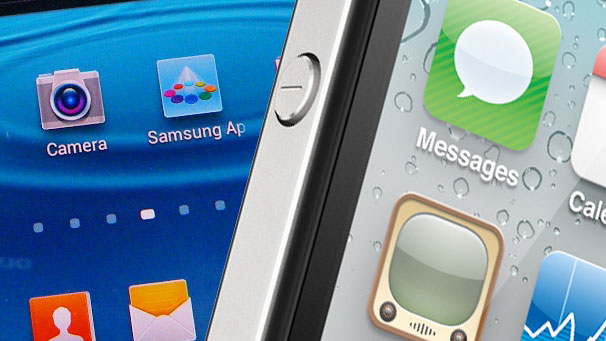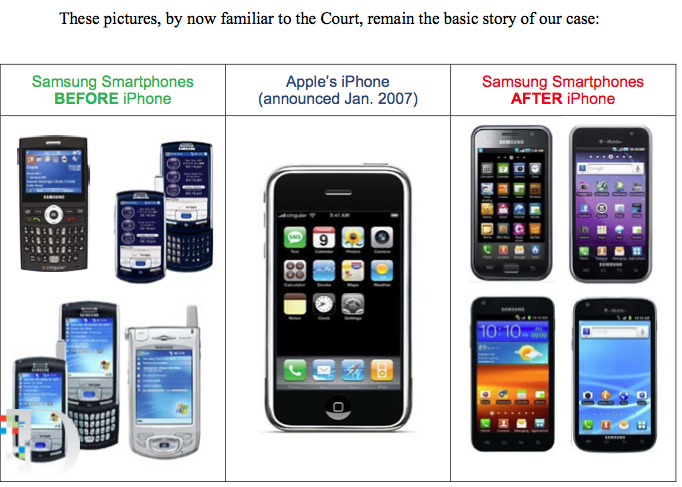Apple awarded huge damages in never-ending Samsung patent saga
How does $539 million sound?

In a moment that made us shudder, in a 'why, why won't this end?' kind of way, Apple has been awarded significant damages in its patent dispute with Samsung, amounting to $539m (around £400m / AU$700).
For those that don't remember this mind-numbing dispute between the two tech giants, it centers around the fact that Apple asserts that following the iPhone's launch, Samsung's new Galaxy range bore a striking resemblance to the iDevice.
Samsung, obviously, doesn't believe it did anything wrong, but the jury in San Jose on May 24 decided that the similarities were too strong to believe that it was either a coincidence or designs that couldn't be governed by a patent.
Apple sent TechRadar the following statement, understandably jubilant with the decision:
"We believe deeply in the value of design, and our teams work tirelessly to create innovative products that delight our customers.
"This case has always been about more than money. Apple ignited the smartphone revolution with iPhone and it is a fact that Samsung blatantly copied our design. It is important that we continue to protect the hard work and innovation of so many people at Apple.
"We're grateful to the jury for their service and pleased they agree that Samsung should pay for copying our products."
Get daily insight, inspiration and deals in your inbox
Sign up for breaking news, reviews, opinion, top tech deals, and more.
Samsung, on the other hand, doesn't believe the same thing:
"Today’s decision flies in the face of a unanimous Supreme Court ruling in favor of Samsung on the scope of design patent damages.
"We will consider all options to obtain an outcome that does not hinder creativity and fair competition for all companies and consumers."
What's actually covered here?
The patent dispute, which started in 2012 and will seemingly never die until a technology journalist sacrifices themselves as a tribute to the tech gods, dealt with three key things: the way the phone looked, the rounded corners and the grid of icons (and how said icons actually looked).
Apple claimed that its design was iconic and covered by its patent, making it unique enough that others aping the design would be infringing. Given the change in Samsung designs pre- and post-iPhone, many would struggle to say there wasn't an influence:

Samsung argued that the designs were generic and that it was always looking into such things, and designs submitted do back up that claim.
The debate has rumbled on for so long not just because it's two massive companies with huge legal departments and deep pockets, but that the nuances of what constitutes copying, and how much of a phone is relevant in the way it looks, is something that's heavily open to interpretation.
Given so much of the phone is filled with patents, there's a question over whether it's the whole phone or just parts of it that are on trial - and thus that has a big impact on how much the damages should be.
In this case, the jury decided that it was indeed the whole phone - and this could have ramification for future, similar, trials.
(For a more detailed, excellent, analysis, check out FOSS Patents' coverage of the whole trial - Florian Mueller is an ex-IP activist and has some superb insights into the dispute, including questioning whether Homer Simpson might have played a part).
So, IS IT OVER?
Nope. Not at all. There's still scope for Samsung to appeal, or for the two brands to settle out of court and make this whole thing go away forever.
What it means for you, the consumer, is minimal - well, pertaining to this exact case. The phones in question were the Samsung Galaxy S2 and variants (the Galaxy S3 was quite a visual departure from the S2, as Samsung took its design in a different direction), so the case is largely irrelevant to today's phones.
We'll keep you updated on this story - but mostly because we're hoping that the next episode will be the final element.
- The current Samsung phones look jolly different, and are among our best smartphones

Gareth has been part of the consumer technology world in a career spanning three decades. He started life as a staff writer on the fledgling TechRadar, and has grew with the site (primarily as phones, tablets and wearables editor) until becoming Global Editor in Chief in 2018. Gareth has written over 4,000 articles for TechRadar, has contributed expert insight to a number of other publications, chaired panels on zeitgeist technologies, presented at the Gadget Show Live as well as representing the brand on TV and radio for multiple channels including Sky, BBC, ITV and Al-Jazeera. Passionate about fitness, he can bore anyone rigid about stress management, sleep tracking, heart rate variance as well as bemoaning something about the latest iPhone, Galaxy or OLED TV.